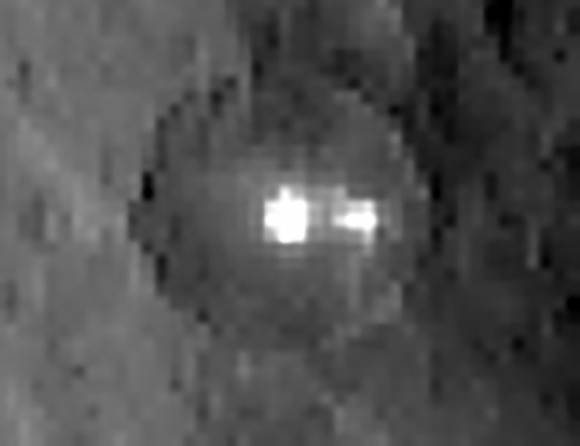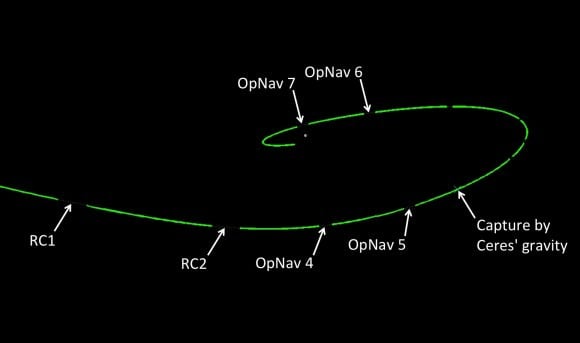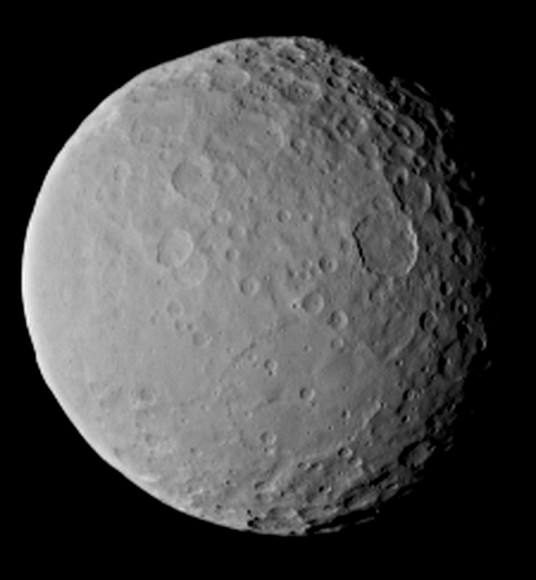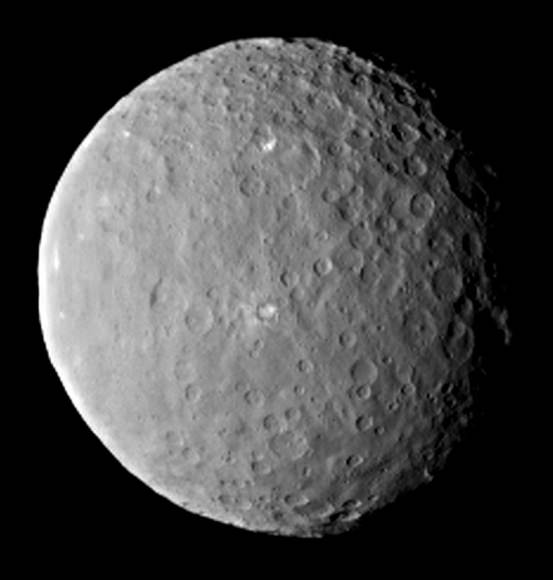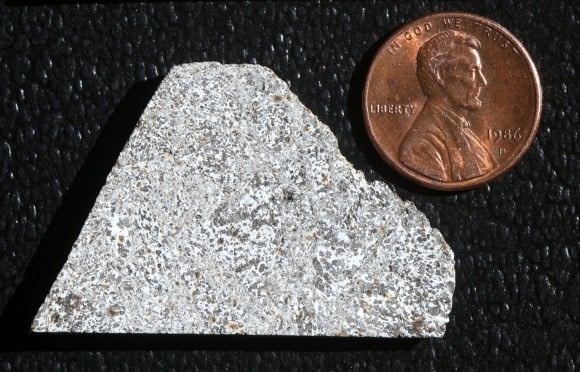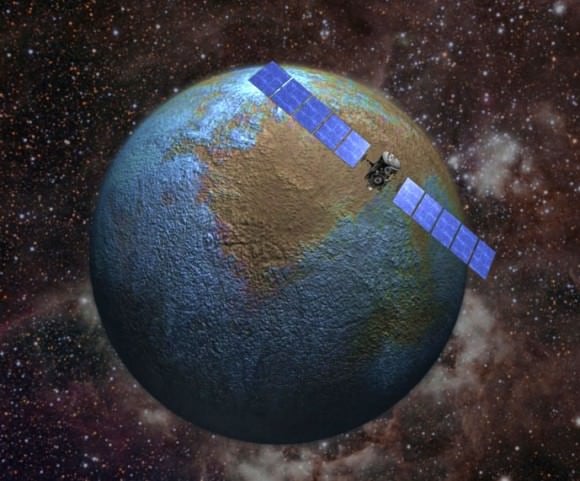Aliens making dinner with a solar cooker? Laser beams aimed at hapless earthlings? Whatever can that - now those - bright spots on
Ceres
be? The most recent images taken by the
Dawn spacecraft
now reveal that the bright pimple has a companion spot. Both are tucked inside a substantial crater and seem to glow with an intensity out of proportion to the otherwise dark and dusky surrounding landscape.
"The brightest spot continues to be too small to resolve with our camera, but despite its size it is brighter than anything else on Ceres," said Andreas Nathues, lead investigator for the framing camera team at the Max Planck Institute for Solar System Research, Gottingen, Germany. "This is truly unexpected and still a mystery to us."
[caption id="attachment_119166" align="aligncenter" width="580"]
Tight crop of the two bright spots. Could they be ice? Volcano-related? Credit:[/caption]
It's a mystery bound to stir fresh waves of online speculative pseudoscience. The hucksters better get moving. Dawn is fewer than 29,000 miles (46,000 km) away and closing fast. On March 6 it will be captured by Ceres gravity and begin orbiting the dwarf planet for a year or more. Like waking up and rubbing the sleep from your eyes, our view of Ceres and its enigmatic "twin glows" will become increasingly clear in about six weeks.
[caption id="attachment_119181" align="aligncenter" width="580"]
Dawn approaches Ceres from the left (direction of the Sun) and gets captured by its gravity. The craft first gets closer as it approaches but then recedes (moves off to right) before closing in again and ultimately settling into orbit around the asteroid. The solid lines show where Dawn is thrusting with its ion engine. As it swings to the right, photos will show Ceres as a crescent. Credit: NASA/Marc Rayman[/caption]
Why not March 6th when it enters orbit? Momentum is temporarily carrying the probe beyond Ceres. Only after a series of balletic moves to reshape its orbit to match that of Ceres will it be able to return more detailed images. You'll recall that Rosetta did the same before finally settling into orbit around Comet 67P.
Closest approach occurred on Feb. 23 at 24,000 miles (38,600 km); at the moment the spacecraft is moving beyond Ceres at the very relaxed rate of 35 mph (55 kph).
[caption id="attachment_119175" align="aligncenter" width="536"]
This and the photo below were taken on Feb. 19, 2015 and processed to enhance clarity. Notice the very large but shallow crater below center. Credit: NASA/JPL-Caltech/UCLA/MPS/DLR/IDA[/caption]
We do know that unlike Dawn's first target, the asteroid Vesta, Ceres is rich in water ice. It's thought that it possesses a mantle of ice and possibly even ice on its surface. In January 2014, ESA's orbiting Herschel infrared observatory
detected water vapor
given off by the dwarf planet. Clays have been identified in its crust as well, making Ceres unique compared to many asteroids in the main belt that orbit between Mars and Jupiter.
Given the evidence for H
2
0, we could be seeing ice reflecting sunlight possibly from a recent impact that exposed new material beneath the asteroid's space-weathered skin. If so, it's odd that the spot should be almost perfectly centered in the crater.
[caption id="attachment_119177" align="aligncenter" width="553"]
A different hemisphere of Ceres photographed on Feb. 19. Credit: NASA/JPL-Caltech/UCLA/MPS/DLR/IDA[/caption]
Chris Russell, principal investigator for the Dawn mission, offers another possible scenario, where the bright spots "may be pointing to a volcano-like origin." Might icy volcanism in the form of cryovolcanoes have created the dual white spots? Or is the white material fresh, pale-colored rock either erupted from below or exposed by a recent impact? Ceres is a very dark world with an
albedo
or reflectivity even less than our asphalt-dark Moon. Freshly exposed rock or ice might stand out starkly.
[caption id="attachment_119178" align="aligncenter" width="580"]
A part slice of the eucrite meteorite NWA 3147. Most eucrites are derived from lava flows on the asteroid Vesta and are rich in light-toned minerals. Credit: Bob King[/caption]
One of the more common forms of asteroid lava found on Earth are the
eucrite achondrite meteorites
. Many are rich in plagioclase and other pale minerals that are good reflectors of light. Of course, these are all speculations, but the striking contrast of bright and dark certainly piques our curiosity.
[caption id="attachment_119167" align="aligncenter" width="580"]
Artist's concept of Dawn in its survey orbit at dwarf planet Ceres. Credit: NASA/JPL-Caltech[/caption]
Additional higher resolutions photos streamed back by Dawn show a fascinating array of crater types from small and deep to large and shallow. On icy worlds, ancient impact craters gradually "relax" and lose relief over time, flattening as it were. We've seen this on the icy Galilean moons of Jupiter and perhaps the largest impact basins on Ceres are examples of same.
Questions, speculations. Our investigation of any new world seen up close for the first time always begins with questions ... and often ends with them, too.
 Universe Today
Universe Today

